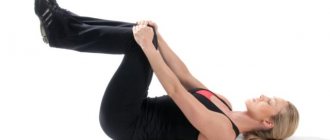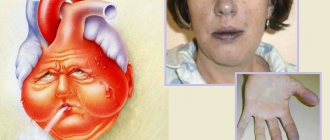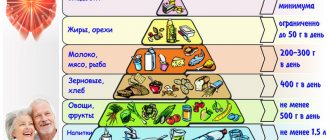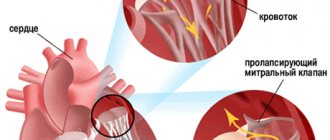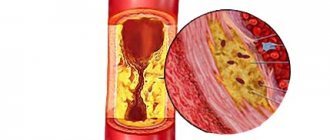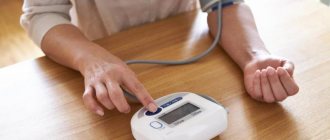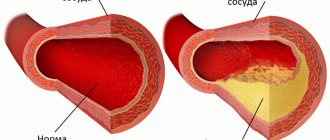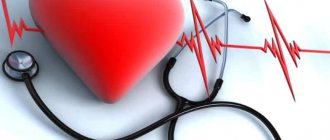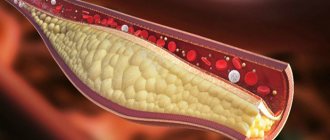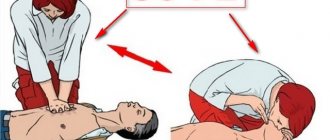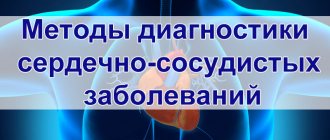In many cases, the development of severe heart disease can be prevented through exercise. Most leading experts in the field of cardiology believe that heart training should be an integral part of a healthy lifestyle. At the same time, doctors prescribe specific exercises even to patients suffering from cardiopathology.
The heart is a muscular organ that constantly pumps blood from the pulmonary circulation to the large circulation. Like any other muscle, the heart can be trained, allowing the body to adapt to increased stress, as well as stop the age-related degeneration observed in its walls.
Why is it necessary to stress the heart and blood vessels?
Are exercises aimed at training the heart useful in that they help prevent the development of such diseases? such as heart attack, angina and cardiomyopathy. Gradually, the myocardium adapts to regular loads, which leads to the normalization of metabolic processes occurring in the organs and tissues of the body.
Video: Physical activity and healing breathing
Cardio training is especially relevant for people involved in professional or amateur sports. As muscle mass increases, the heart needs to pump more blood, so this type of exercise is extremely important for improving athletic performance.
Why train your heart?
Cardio training is most often used by those who have an increased risk of heart disease. Exercise therapy is also a mandatory part of rehabilitation after a heart attack or stroke. Why then should a healthy person do cardio training?
- The heart pushes blood through every vessel in our body with powerful impulses, thereby ensuring vital activity. In order for it to work as long as possible, you need to regularly repeat special exercises.
- The quality of your life directly depends on the fitness of your heart. If from a young age you are accustomed to daily cardio exercises, then in old age you will surprise your peers with energy and mobility.
- One of the benefits of cardio training is that it helps burn fat. If you suffer from excess weight, then this kind of gymnastics is necessary for you.
Most patients with problems in the cardiovascular system are sedentary.
There are good reasons to train your heart, but you don't need to stress yourself out with hours of training. Exercises will only help if you do them systematically, gradually increasing the pace. Proper cardio training includes other positions.
Basic rules for training
Any exercise can pose a health hazard if not performed correctly. People suffering from hypertension or those who have recently had a heart attack, stroke or surgery need to be more careful when choosing the type of physical activity. Patients with bronchial asthma are also at risk.
At the very beginning of any training, it is necessary to warm up. Without this, there is a high probability of ligament rupture, muscle overextension and joint damage. Warm-up should be comprehensive and take at least 10 minutes.
For those who suffer from excess weight, activities that involve increased axial load, such as running or jumping rope, are not recommended. Due to increased body weight, greater stress is placed on the knees and ankles, which can lead to injury and premature wear of the joints. In such cases, training on exercise bikes would be the best option. By adjusting the degree of resistance of the pedals, it is convenient to control your pulse and exercise in a certain heart rate range.
When exercising on a treadmill or during regular running, you need to push off with your toes and then move your foot to your heel. This technique allows you to absorb pressure and distribute it evenly along the lower limb, without focusing the load on a particular joint.
Exercises for diseases of the cardiovascular system
A set of exercises for patients with arthritis (for most exercises you will need a chair with a straight back)
1. I.p. – sitting on a chair, lean your back along the entire back of the chair. Straighten your back, straighten your shoulders, lift your head and inhale. Relax – exhale. 8-10 times.
2. I.p. - sitting on a chair. 1 – slowly tilt your head, touching your chin to your chest, 2 – slowly tilt your torso towards your knees, 3-4 – slowly straighten up in a standing position.
3. I.p. – sitting at the table, hands on the table, forearms raised up. Slowly clench your fingers into a fist, trying to reach your middle finger with your thumb. 8-10 times.
4. I.p. – sitting at the table, hands on the table, palms up. Use the tip of your thumb to touch the base of each finger of your hand in turn. 8-10 times with each hand.
5. I.p. – fingers clenched into a fist. Circular movements in the wrist joint in one direction and the other. 4-5 times with each hand.
Repeat the same exercises, but in i.p. the elbow rests on the side.
6. I.p. - sitting on a chair, leaning against the back, hands on your knees. Slowly bend your right arm towards your shoulder, straightening it forward, bend it again and lower it into a standing position. Repeat the same with your left hand. 8-10 times with each hand.
7. I.p. – sitting on a chair, feet on the floor. Raise the heel of your right foot and lower it. Raise your fingers - lower them. Repeat alternately 4 times with each foot, then 4 more times with both feet simultaneously.
8. I.p. - Same. Without lifting your heels and toes from the floor, arch the arch of your right foot, forming a “bridge.” Same with the left. Repeat 6-7 times with each leg.
9. I.p. - sitting on a chair cross-legged. Flexion and extension of the feet of the free leg. 6-8 times with each leg.
10.I.p. - Same. Pull the toe of your foot up, down, in, out. Then make a circular motion. Repeat 6-8 times with each leg.
Adaptive joint gymnastics
Each exercise is performed 10-12 times. Stretching exercises are performed with a delay at the end point for 10-15 seconds.
1. Breathing exercises.
2. I.p. – gray-haired, arms bent at the elbows. Moving forward and backward on the buttocks.
3. I.p. – sitting emphasis, legs bent, feet on the floor. Alternately lowering the legs to the right and left with a delay of 10 seconds.
4. I.p. – sitting emphasis, legs bent apart. Alternately lowering the knee inward.
5. I.p. - sit up in back position. Simultaneous (alternate) flexion and extension of the feet.
6. I.p. - Same. Rotation of the foot.
7. I.p. - Same. Bending your right leg, touch the toe of your left knee and vice versa.
8. I.p. - Same. Alternately moving your legs to the sides.
9. I.p. - Same. Alternately raising bent legs (shins parallel to the floor).
10.Repeat exercise No. 3.
11. I.p. - lying on your back. Repeat exercise No. 9.
12.I.p. – lying on your back, legs bent, feet on the floor, hands behind your head. Shoulder raises.
13.I.p. - Same. Raising the pelvis.
14.I.p. - Same. Repeat exercise No. 4.
15.I.p. – lying on your back, the right one is bent, the heel of the left foot is on the right knee, hands behind the head. Raising the body with a turn to the left until the elbow touches the knee of the left leg.
16. Repeat the same to the right, changing the position of the arms and legs.
17.I.p. – lying on your back, legs bent, feet on the floor, hands behind your head. Raising the shoulders and alternately touching the heel with the hands of the same name.
18.I.p. - Same. Repeat exercise No. 3.
19.I.p. – lying on your back, legs forward. Spreading your legs to the sides.
20.I.p. - Same. Alternately lowering your legs to the sides.
21.I.p. – lying on your back, legs bent, feet on the floor, hands behind your head. Simulation of cycling.
22.I.p. - on my knees. Breathing exercise: inhale through the nose, exhale through the mouth with the sound ha-a-a.
23.I.p. – lying on your stomach, the right one is laid back. Flexion and extension of the right shin. Repeat the same on the left leg.
24.I.p. - Same. Alternately moving the legs back with the foot towards you.
25.I.p. – lying on your stomach, arms to the sides. Swing the right back with abduction to the left until the left hand touches. The same with the left leg with abduction to the right.
26.I.p. – lying on your stomach, press as close to the floor as possible. Raising the pelvis.
27.I.p. – lying on your stomach, hands in front of your chest. Raising the body by moving the bent arms back.
28.I.p. – sit on your heels, lean forward, hands up on the floor. Extending your legs, go into a position lying on your hips.
29.I.p. - Same. Alternately extending the legs back (the chest lies on the thigh of the bent leg).
30.I.p. - kneeling position. Bend forward, alternately touching your shoulders to the floor.
31.I. p. - the same. Breathing exercise.
32.I.p. – lying on your left side, with support on the forearm of your left hand. Alternate swings to the side with a bent and straight right leg.
33.I.p. - Same. Touching the floor with the knee of the right leg in front of the left.
34.I.p. - the same, right hand behind the head. At the same time, bending your right to the side, touch the floor in front of you with your right elbow. Straightening your leg, return to standing position.
35.I.p. - Same. Retracting the right back.
36.I.p. - Same. Alternate swings with the right: to the side, diagonally forward, diagonally back.
37.I.p. - Same. Raising bent legs to chest.
38.Repeat exercise No. 31.
39-44 – repeat exercises 32 to 37 while lying on your right side.
45. Repeat exercise No. 27.
Exercises to train your heart
Fast walking is considered the best way to train the heart, as it allows you to carefully dose the load and also regulate your heart rate. For better monitoring, you can purchase a sports pulse oximeter that shows your heart rate in real time. Thanks to this function, you can change the intensity of the load and avoid overwork. To begin with, it is recommended to exercise for about 30 minutes a day, increasing the duration of exercise by 10 minutes each week. Then you can split the workout into 2 parts (morning and evening), 1 hour each.
Video: Gymnastics - Healthy heart and blood vessels
Swimming is recognized as the most comprehensive sport. Allows you to work out almost all muscle groups, increase overall endurance and also strengthen the cardiovascular system. It is necessary to start swimming sessions with light loads. In the first stages, it is better not to swim for more than 15 minutes with a gradual increase to 45 minutes. You shouldn’t chase distances, but rather concentrate on your sensations and rhythm control.
Physical activity
Physical activity can be different, and all of it can bring both harm and benefit to your heart and blood vessels. You need to be extremely careful to train correctly and without harming yourself. Below we will describe the basic rules for conducting training that strengthens the muscles of the heart and blood vessels, but before that, let's look at the main advantages of conducting such training:
- The level of C-reactive protein (CRP) in the body will decrease. It is the culprit of inflammation in the body. A high level of CRP may indicate an increased risk of CAD.
- People's blood pressure and triglycerides, a type of fat in the blood, are normalized.
- Exercise helps raise HDL (good) cholesterol levels.
- Exercising helps your body regulate blood sugar as well as insulin.
- If you are overweight, it will gradually go away if you additionally use the right diet.
- You will be able to quit smoking and bad habits faster.
Less active people are more likely to develop CAD than people who exercise regularly. Research shows that a sedentary lifestyle is a major culprit in cardiovascular problems.
How to train your heart with aerobic and cardio exercises?
To train your heart muscles through regular aerobic or cardio training, you only need three rules:
- The heart rate should not be higher than 130 beats per minute and not lower than 100-110 beats, respectively; the optimal value would be 120-130 heart beats per minute.
- The duration of aerobic training should be within one hour, and if the blood vessels are weak, then no more than 30 minutes.
- You should train in this mode at least 2-3 times a week.
To do this, you will need any cardio or aerobic activity and a heart rate monitor. For example: running, cycling, dancing, step aerobics, etc. If you don’t want to bother too much, then just take evening walks at a fast pace at least 3 times a week. A clear result (obvious) will already be visible in a couple of months.
Exercises to strengthen blood vessels
Vacuum simulation
You need to take a deep breath and exhale, then pull in your stomach and in this position you need to push your stomach back out (put your palm on your stomach and push it from the stomach and back with your belly). Do all this while holding your breath after exhaling for 15-20 seconds. 1 per day.
Morning work-out
Exercise should include: swinging movements, rotation of the limbs, shoulders and torso, bending, raising the arms and legs, as well as walking in place. Charging is carried out within 5 minutes.
Exercises to strengthen your heart
Squats at the door
During squats, your arms should be extended and resting on door handles, and your knees should always be level with your toes. After 2-3 months you should be able to do at least 100 squats. In total, you can squat 300-400 times. In this exercise, the heart works as a receiver, pumping blood. For people of summer age, you need to squat 20-30 cm, and after 1-2 months of training you can squat to a horizontal line.
With this exercise you will not only strengthen your heart, but also strengthen your spinal muscles and make your legs stronger.
Nordic walking
For older people, sticks can be used as support. The movements should be rhythmic and natural, alternately raising the arm and leg at the same time. It is advisable to use aluminum poles with additional straps, the length of which should be higher than the pelvis.
Exercises at home
Not everyone has the opportunity to exercise outdoors or in special fitness centers, but this does not matter, since there are several simple exercises that can be performed at home.
In the first stages, you can do regular squats. For example, start with 20 reps and gradually increase by 10 per week. If difficulties arise, it is recommended to perform the exercise while leaning on the door arm, the back of the sofa or any other furniture.
On the Internet you can find a large number of videos with step aerobics classes. Thanks to the combination of dynamism and rhythm, exercises from this group are very convenient in terms of cardio loads. Step aerobics does not require special equipment other than a platform and can be safely practiced at home. Many people who are interested in such training note that training at home can be even more comfortable than in groups.
Many people think that yoga is a slow exercise that is not capable of causing an increase in heart rate, but in fact this is not the case. There is Ashtanga yoga, which provides fast and dynamic classes that combine aerobics and classical yoga. Loads of this type are convenient because they allow you to control your heart rate and take breaks to restore your breathing.
What else should you pay attention to?
In addition to training, giving up bad habits has a beneficial effect on heart function. Many toxic substances that enter the human body have pronounced cardiotoxicity. Quitting smoking and drinking alcoholic beverages strengthens the myocardium and allows you to quickly adapt to physical activity.
It is also necessary to pay attention to the fight against excess weight. Large body weight associated with the content of adipose tissue leads to excessive stress on the heart and increases the likelihood of developing vascular complications. A proper healthy diet, which involves avoiding high-calorie foods, replacing animal fat with vegetable fat and reducing the consumption of fast carbohydrates, promotes rapid weight loss.
Heart training: pulse and its indicators
In sports circles, training in a certain heart rate zone is popular, which allows you to increase blood flow and achieve positive cardiac hypertrophy. Each of these zones can have its own influence on the state of the body. For example, training in specific zones can help burn fat, improve anaerobic capacity, muscle strength and endurance.
You shouldn’t overload yourself with exercises at the very beginning, because this format of training has a negative effect on your health. The intensity of exercise should be increased slowly so that it becomes a habit and gradually becomes routine. Working out shouldn't be a one-time thing, it needs to be made part of your lifestyle.
The main factor indicating the positive effects of exercise is the change in heart rate. To find out your maximum allowable heart rate, you need to take the number 220 and subtract your age from it. This means that men over the age of 55 are highly discouraged from training with a heart rate of more than 165 beats per minute. To improve cardiac performance, achieve better blood output and increase overall endurance, it is necessary to exercise in the range of 60 to 70% of the maximum permissible frequency. The resulting figure will be called the working heart rate (HRR).
All of the above indicators can be calculated in another way. First, you need to find out your resting heart rate (RRR). To do this, you need to measure your pulse in the morning, immediately after waking up. Let's say the RSP is 60 beats per minute. Then you need to measure your heart rate at maximum exercise (RME). To do this, it is best to run at maximum speed, preferably a sprint. The heart rate value obtained after a run will be considered RSM. As an example, let this figure be equal to 195. To determine the RSM, you need to take the RSM and subtract the RSP from it - 195-60=135.
If during training it is not possible to achieve RRS, then this will be a signal about the need to increase the intensity of the load.
Training intensity
The intensity of cardio training is determined by heart rate (HR).
The general formula for calculating the maximum heart rate: HR max = 220 – age For healthy people, the optimal values can be divided into 5 zones:
Zone 1 – low intensity. Work in aerobic conditions in the range of 50-60% of maximum heart rate. Recommended for beginners. This type of training improves and maintains overall fitness and reduces tension and stress. Zone 2 – moderate intensity – fat burning zone. Work in aerobic conditions in the range of 60-70% of maximum heart rate. Zone 3 – high intensity – aerobic zone. Work in the range of 70-80% of maximum heart rate. The overall fitness and endurance of the body increases, but fat burning in this area is no longer as effective. Zone 4 – very high intensity, working in anaerobic conditions in the range of 80-90% of maximum heart rate. This area is for people in good physical shape. Training in this zone helps increase strength and speed, as well as muscle mass. A side effect may be too much lactic acid being released into the muscles, which can lead to excessive muscle soreness. The zone is not effective in reducing body fat. Zone 5 – extreme intensity – maximum effort. Work in anaerobic conditions above 90% of maximum heart rate. Such excessive efforts are only possible for a very short period of time.
Aerobic training can also be divided into two phases. In the first stage, glycogen is mainly burned, that is, carbohydrate reserves stored in the body (mainly in the liver and muscles). In the second phase, adipose tissue begins to be burned, increasing the load on the heart and blood vessels. It is for this reason that a cardio workout should have a certain duration and last about 40-50 minutes (fat burning usually begins 20-25 minutes after the start of exercise).
For this workout to be effective and beneficial, cardio should be performed at a moderate pace, increasing your heart rate to 60-70% of your maximum heart rate. Heart rate over long distances (from 40 minutes) should not exceed 120-130 beats/min.
Strengthening the heart and folk recipes
Cardio exercises go well with folk remedies. In terms of beneficial effects on the myocardium, decoctions, syrups and infusions from hawthorn have proven themselves well. For example, hawthorn syrup is full of vitamin C, which is involved in many enzyme reactions that affect heart function.
To prepare it, you must first boil fresh or dried hawthorn berries. For 30 g of berries you should get 600 ml of water. The pan must be kept on low heat for about an hour. Then you should filter the broth through several layers of gauze. The berries are removed, and the liquid is again placed on the stove. Continue until half the volume remains of the broth. Then add a sweetener, which is maple syrup or honey. To achieve the optimal ratio, it is recommended to add sweetener to taste.
